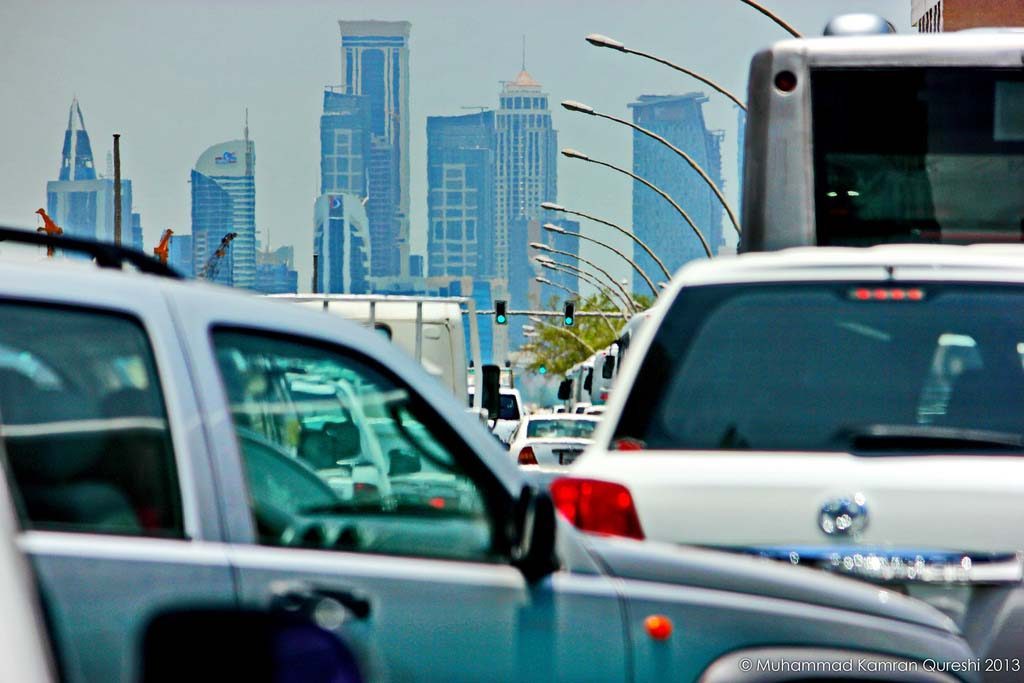
The morning school run in Qatar creates nearly a quarter of a million extra vehicle journeys on Doha’s congested roads each day, according to a new traffic study.
The research, which was conducted by Qatar University‘s Road Safety Studies Center (QRSSC), puts into numbers what every commuter in Qatar already knows – that traffic around town gets significantly worse when the academic year is in session.
Morning drop-off, classified by researchers as taking place on weekdays between 7am and 9am, was found to be one of the busiest times on the roads, in part due to the nearly 150,000 car journeys made to the nation’s schools.
Most of these (99,000) were to private schools, while just under a third (49,000) of the journeys were made to independent (government-run) schools, the survey found, according to the Peninsula.
The large number of private school trips are largely due to the fact that more students attend such schools, 145,000 compared to 102,355 children enrolled in independent schools.
However, the study also found that students attending independent schools are more likely to use buses than those who are privately educated.

Meanwhile, after-school pick-up, which is classified as being between noon and 2pm, creates nearly half the number of journeys (80,000), suggesting that either more children share rides after school or that many stay later for clubs and other activities.
Perhaps reflecting local culture, girls are more likely to be driven to school in a private car than to take school transportation.
Students attending secondary independent girls’ schools recorded the highest ratio of car trips, at 79 per 100 students in the mornings.
This compared to the average for all private schools of 62 trips/100 students, while for primary and middle-school boys and girls, the ratio was 43 trips per 100 students during morning drop-off.
In terms of school bus operation, the Supreme Education Council (SEC) runs a total of 1,860 trips daily to independent schools.
To alleviate gridlock, the study recommended that more pupils should use school buses during peak times.
Bus unease
However, Qatar parents have long been reluctant to use school transportation.

A 2012 report on the issue by the Rand-Qatar Policy Institute found that only about one-third of what was then 200,000 school-age children here travel to and from school on buses.
Parents cited safety concerns including the high rate of road collisions in Qatar as the main reason they rely on alternative forms of transportation.
Several tragedies in recent years have contributed to those perceptions. In an extreme instance, a four-year-old student at the DPS-Modern Indian School died in 2010 of suffocation after falling asleep in her school bus.
The driver didn’t notice her and parked the vehicle at the end of his shift, leaving it locked on a hot day.
In an attempt to help address some of these concerns, the Ministry of Interior (MOI) issued a list of guidelines to school bus drivers and those using school transport, ahead of the start of the new school year this month.
This included advice such as not distracting the driver by shouting, ensuring children remain seated while the bus is moving and waiting for the bus to completely stop before approaching it to board.
With around 9,000 vehicles joining Qatar’s roads each month as the population accelerates, the nation’s infrastructure is straining under the pressure and commuters may need to consider other transport options such as arranged car pooling for school and work journeys.
Have you figured out a way to survive the morning rush? Thoughts?







